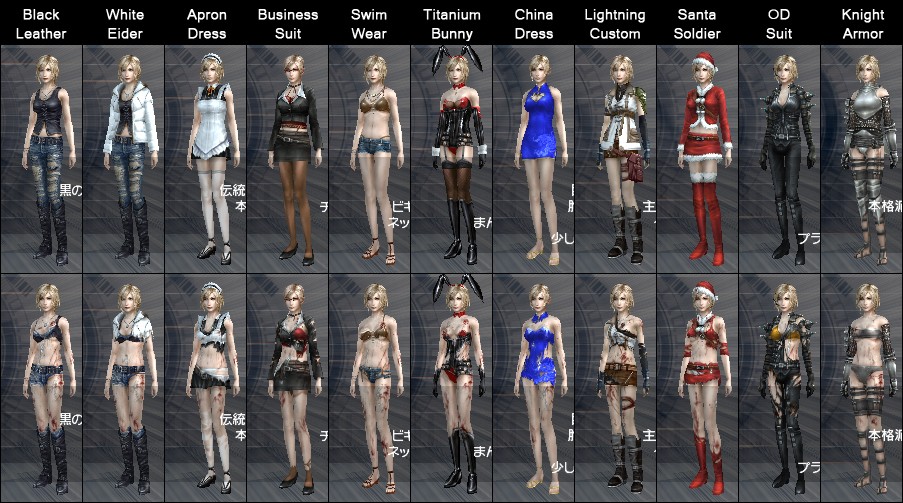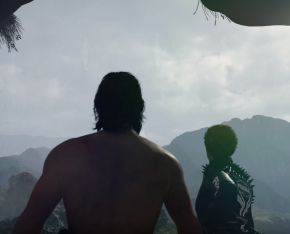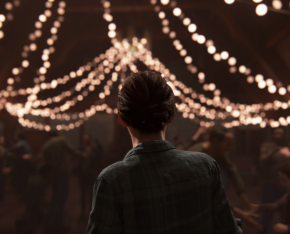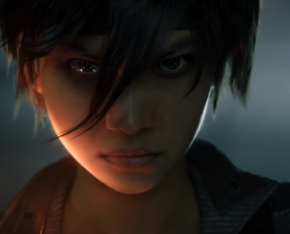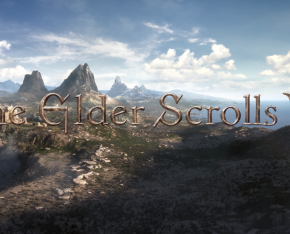By Bryan Smith on April 19, 2015 at 2:09pm
I’d love to meet a person in the world who hates the concept of characters. Everyone on the planet can agree to love characters because of what they do whether they are conscious of the fact or not. Whether they entertain, explore human behavior, intrigue, cause raw emotions, and/or implore positive behavior, characters are essential to people and their ideals. Video game characters are great to examine and explore because they offer one thing most other mediums can’t: interaction. You get to control a character and his or her actions, which speaks not only for what the character does but also the player.
Today’s discussion is centered on misrepresenting a character in video games. Different artists throughout the years have often portrayed characters in a different vein long before most of us were born. For example, you can make an entire army full of Batman portrayals (i.e. Michael Keaton, Adam West, and Kevin Conroy as actors and Frank Miller, Bill Finger, and Alan Moore as writers. These are only a limited selection of actors and writers that have portrayed Batman). Everyone loves “Batman: The Animated Series’” Batman because of how iconic and well written he is. This Batman symbolizes how a man in a bat suit can help protect a city yet send fear down people’s spines just from his presence, even if he doesn’t do anything. “All Star Batman & Robin, the Boy Wonder,” however, is heavily criticized for Batman swearing quite a bit and acting more like a psychopath than, well, Batman.
That is just to set the stage. Because video games are a relatively young breed of media, there won’t be a whole lot of examples to pick and pull from as, say, Batman, comics, movies, or the like. Most of the notable examples I am picking have had a reboot, retelling, or a different style of storytelling/writing that the main series didn’t have.
Oh, and MASSIVE SPOILER WARNING. I’m going to spoil these games rotten.
Dante of the "Devil May Cry" Series
For Player Theory readers following, you may recall me describing a phenomenon called the “Capcom Stigma,” where a game should have been made into something completely different but used an existing IP to play it safe. The “new” Dante from “DmC: Devil May Cry” should have been used for a different character in a different IP rather than “shifting” a different character’s personality around to being unrecognizable. Show the picture comparing Old Dante and Twilight Fanfiction Dante again.
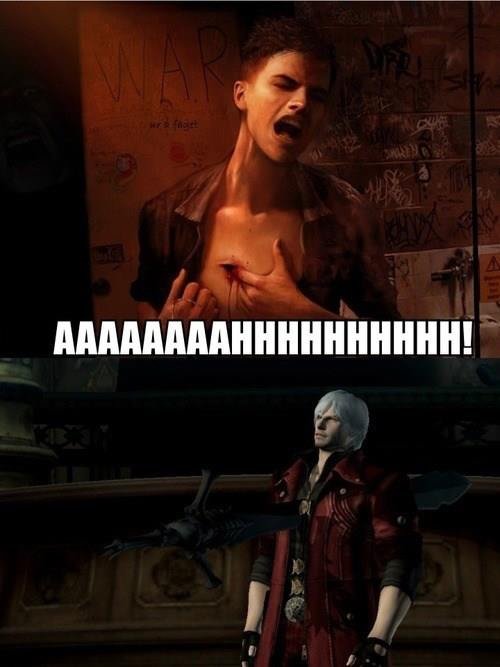
Love that picture. It just captures everything wrong in tone and character. I may be beating a dead horse here, but Dante is a smooth, collected character who loves to have fun and do wacky things like surf on enemy bodies and destroy a Hellgate as if he was dancing a tango. He even has a little rose in his mouth to top off the wackiness. For the fans of the series up to “Devil May Cry 4,” Dante has been a cool yet zany character that loves pizza and is terrible with paying debts. We wanted to be Dante for what he does and how cool he made riding a rocket looked.
The new Dante is not cool. Just about the only thing that was outrageous in terms of “Wow, he did that! Now I want to do that” was when his trailer home was rolling about and he grabbed his clothes on while it launched everything in the air. To be honest, I would expect Old Dante to do something like this given the chance. But that’s the thing: Twilight Fanfiction Dante doesn’t come close to doing anything awesome again. He just fights demons and does what’s he is told by Kat and Vergil. The defining characteristics for this Dante are him being a dick to people in the beginning and his hair turning black to white. Sure, the Old Dante swore occasionally, but he wasn’t swearing like a sailor. Hell, I think Nero swore more than Dante did. I know the original “Devil May Cry” series isn’t known for Shakespearian writing, but it wasn’t as immature as the “fuck you” contest between Dante and Poison the succubus boss.
So what about “DmC: Devil May Cry” being an origins story of the sort (despite it being an alternate universe version)? A young Dante would surely be a wimp and wouldn’t be able to fight demons, right? There are two problems with that thinking.
- Dante is half angel and half demon. Considering how much abuse he can take even at the beginning of the game and walk it off, I don’t buy that. If they wanted that angle, they should have gone making Dante much younger and show more character growth as opposed acting like a jerk and then slowly improving.
- They already did this with “Devil May Cry 3: Dante’s Awakening.” In fact, “DmC” is just “Devil May Cry” and “Devil May Cry 3’s” stories with Mundus behaving more like Arius from “Devil May Cry 2.” Nothing here is really explored that hasn’t been done before other than colorful commentary based around the bosses. Twilight Fanfiction Dante adds nothing to the character, because he doesn’t really match the personality and doesn’t show growth we haven’t seen before.
Samus Aran from the "Metroid" Series
Amusingly, a lot of people blamed Team Ninja for “DmC: Devil May Cry.” Ninja Theory developed that game while Team Ninja created “Ninja Gaiden” and “Dead or Alive - the fighting game series that is known (infamous or not is debatable) for its “fan service,“ inventing the widely-known term "jiggle physics." Ninja Team also developed “Metroid Other M.” A team who is known for sexually exploiting their women working on a character who is supposed to break objectifying women as sexual icons? What could possibly go wr-EVERYTHING. Before anyone jumps down my throat, yes I know that Yoshio Sakamoto is a big reason why the game is the way it is. I just don’t think Team Ninja helped with the portrayal of Samus.
The “Metroid” series was one of the few franchises that really didn’t have a black sheep in its catalog of games. The closest to being less than stellar was “Metroid Prime 2,” and that’s still a game that holds up relatively well. ...Until “Other M” came about. Very few people look fondly back at “Other M” because of its awful writing and barely decent gameplay. The absolute worst part of this game is how Samus is portrayed. She isn’t a bounty hunter who can handle any threat thrown at her - she’s a submissive soldier who only uses her powers and equipment when her authority figure Adam Malkovich tells her she’s “authorized.”
The authorization was an attempt to limit what weapons and suits Samus could use as opposed to her just losing them as has happened frequently in previous installments. It was also justified to keep Samus from doing too much harm to the planet and others. Authorization, however, led to some of the worst stupidity shown for video game characters known to man. While in the lava area, Samus takes constant heat damage in her regular suit. The Varia Suit keeps Samus safe from the heat and only serves to protect Samus. Adam has to authorize Samus in order for her to use it. This doesn’t happen right away either. Samus runs around in the area for a while, taking constant damage mind you, until she gets to a certain point where Adam suddenly decides that she can use it. Imagine the players at this point as he/she frantically tries to figure out what will keep Samus alive only to die relentlessly. That isn’t just dickish on the whole limiting-powers problem; that’s dickish for gameplay purposes as well.
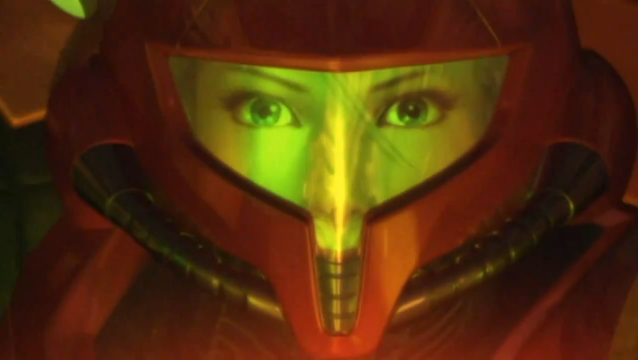
Then there’s Samus herself. Apparently “Other M” was an attempt for Samus to deal with the loss of the Baby Metroid and her actions as a way for players to look into her character. That backfires, however, when Samus has really never been known for sulking and talking to herself with monologues. As stated before, Samus also suddenly submits to an authority figure, Adam. What most fans and critics point to as Samus’s worst characteristics in “Other M” is when Ridley shows up. Samus is “so shocked and terrified” of Ridley, she is stunned and has flashbacks of Samus as a child while her parents were killed. Yeah, sorry but as a critic I have to call crap on that. If this was the first time Samus saw Ridley since the traumatic experience, I may buy that. There’s just one little problem with that; Samus kicked Ridley’s ass and killed him several times before this. “Other M” is the second to last game chronologically before “Metroid Fusion.” In fact, Samus defeated Ridley at least four times before “Other M.” Why is Samus so suddenly scared of Ridley now after launching hundreds of projectiles into his face before? It’s because the writing dictates that Samus is a scared little girl who needs Adam to authorize her powers and nothing more.

Aya Brea from the "Parasite Eve" Series
What baffles me about the next example is that there doesn’t seem to be much outside influence, as in Square Enix were the ones solely driving the “Parasite Eve” series (Square Soft back then). HexaDrive did help, but Square was the main team behind the series, unlike Ninja Theory and Team Ninja, who were “helping.” Whether it’s because of differing ideals from the directors, producers, or artists or a completely mysterious internal dispute, I can’t say for sure. One thing is certain though: Aya Brea’s characterization in “The 3rd Birthday” was abysmal. She went from a badass cop to a sexualized icon with all concern thrown out the window.
You may be wondering what “The 3rd Birthday” is, because it doesn’t hold the title of “Parasite Eve.” That’s because “Parasite Eve” isn’t owned by Square. The rights reportedly belong to Hideaki Sena, and there was a supposed dispute between the two, which led to the title “The 3rd Birthday.” I wish the title was the only thing that had trouble, but that wasn’t the case with this game. “The 3rd Birthday” was designed to be a mobile episodic game, but the idea was scrapped to be a PSP game. That meant the original gameplay and story were scrapped as well, which turned into a third-person shooter that hardly resembles the previous “Parasite Eve” games. The “Parasite Eve” games mixed the styles of “Resident Evil” and “Final Fantasy,” which were mashed up two different genres fairly well. Consider “The 3rd Birthday” as a late entry in the Capcom Stigma list.
Remember that I said the story was also scrapped? I’m willing to bet that the scrapped ideas caused a panic with the writing team, and they scrambled to make a surprising plot twist with the concepts and designs given to them. The writers here convoluted the story to no end. As I played the game years ago, I expected Aya being her own grandmother levels of plot twists, and boy did I get a twist. It’s just that not all twists are good, because they are designed just to be twists in the first place. The twist involves Aya and her little sister-like clone named Eve from “Parasite Eve II.”
Before touching on the plot twist though, let’s start with the characterization of Aya Brea. In the first two games, she’s a cop who has mysterious mitochondria powers that help her fight a monstrous Eve. She banters with her officer friends in witty ways and dates someone named Kyle who spontaneously combusts (it happens). With “The 3rd Birthday,” however, we start to see a stark contrast. Aya drops the bravery, strength, and confidence she exuded before. She also whines in pain rather than grunts and screams agonizingly, something that critics pick up in cliché female characters. Additionally, Aya’s clothes are designed more to be sexualized with the cut jeans and jacket, which are torn off more, revealing more of her skin.
Now here comes a twist - the time traveling shenanigans that Aya partakes in that are a result of her gaining time travel for some reason. That reason is that Aya isn’t Aya. Eve is actually in Aya’s body this whole time. Long story short, Aya and Kyle went to get married but a bunch of SWAT soldiers tried to murder them and the guests for… reasons… and Eve saves them by taking Aya’s body with mitochondria powers, which causes the game’s ability to move into other people’s bodies and time, the Overdrive ability, and enemies the Twisted to be created. Now that Aya and Eve know what happened and are back to the point where the Twisted would be created, Aya makes Eve shoot her, but they are in each other’s bodies. I know; it’s confusing. Eve “supposedly” kills Aya, which makes sure the Twisted aren’t created and none of the game’s events happen or matter in the first place.
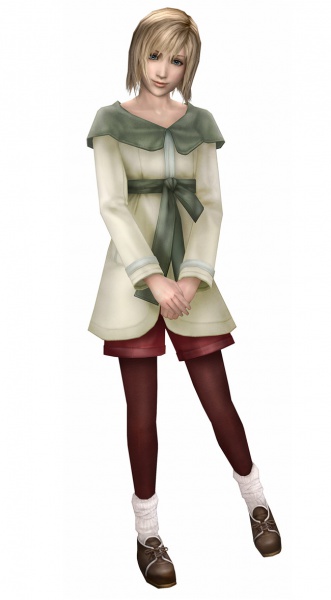
Where do I begin? Let’s ignore the fact that Eve and Aya swapping bodies is the very thing that caused the Twisted to exist in the first place. No, let’s see why having Eve in Aya’s body doesn’t work. For one thing, most players who knew about “The 3rd Birthday” are coming for Aya Brea, the main and pivotal character. I, as a fan, did not come to follow in the steps of Eve, who we barely know to begin with and have little personal attachment to. How insulting and embarrassing would it be to play a game expecting, for example, Duke Nukem but instead of playing as Duke, we get a wimpy little kid clone in his body? That’s this game.
Secondly, the implications are absolutely horrifying. Eve is for all intent and purposes a 13 year old little girl - emphasis on “little girl.” That body may belong to a woman in her 30s to 40s, but Eve is still mentally a child. So for all of that sexual, even erotic, clothes the designers made for “Aya,” that’s Eve in those clothes. I believe the video maker The Spoony One mentioned this before for his review of “Final Fantasy X” and I’m going to quote him: “If this was a live action game, we'd all be registered sexual offenders!” Cultural differences or not, you can’t just let this implication of underage sexualization for a character that was never about an underage girl or sexualizing a cop with mitochondria powers.
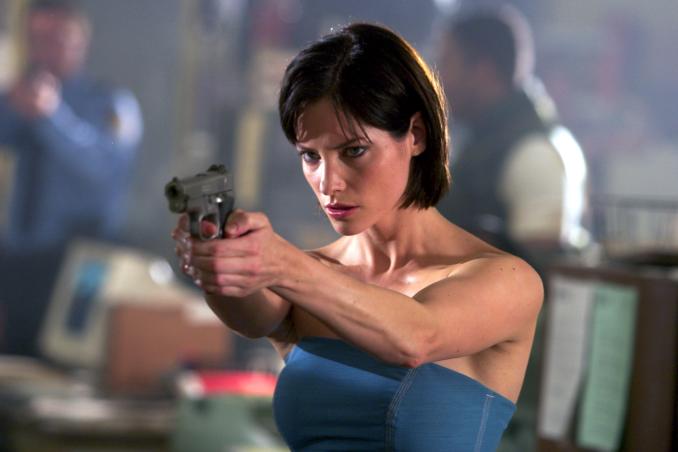
The Interesting Case of Jill Valentine of the "Resident Evil" Series
Now I’m going into the “Resident Evil” movie territory. Yes, I know, a dangerous practice. But bear with me; I have a surprising revelation that ties nice together at the end. Jill Valentine, while not the most complicated nor the most interesting video game character conceived, has confidence to face unspeakable horrors of the undead practically by herself and comments with snark with Barry Burton and Albert Wesker in the first “Resident Evil” game. This is also explored and developed in “Resident Evil 3: Nemesis.” Then the movies came along.
While nothing great, the first “Resident Evil” movie by Paul W. S. Anderson was an interesting inside story as to what happened in the Umbrella Corporation. With viruses being developed and used as weapons, people are willing to sabotage their own work just to profit. Had Anderson kept with making the film series its own thing aside from the main “Resident Evil” canon, I think it would have faired better. Sadly that’s not the case. “Resident Evil: Apocalypse” rolled out and curb stomped everyone’s hopes of a good “Resident Evil” film series with Anderson at the helm. As opposed to trying to infuse oneself into a main character, as in Tameemi Antoniades trying to make Dante himself, Anderson wanted to insert a god-like Milla Jovovich in as the main protagonist as Alice. Milla is also Anderson’s wife. Alice is a good reason why people criticize “Mary Sues” harshly.
Alice completely overshadows everyone in the “Resident Evil” movie series. She’s the attention, and anything that has a spark of interest gets sucked into Alice. The beginning of “Resident Evil: Apocalypse” shows an angry Jill coming off, supposedly, from the Arklay Mountains incident and she knows about the T-Virus incident. Her portrayal starts off decently until she meets Alice. At that instant, Jill is reduced to a cheerleader to whatever Alice does. Apparently, Sienna Guillory had several reasons not to return for “Resident Evil: Extinction.” The obvious reason was of “Eragon,” but the other not so known reason was because of Alice overshadowed everyone and Sienna, as I have read, took her role seriously. If I was acting a role of character I loved and that character got overshadowed, I would be upset too.
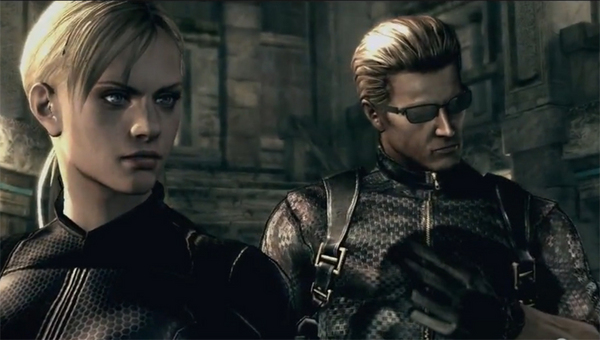
Now back to the games. “Resident Evil 5.” Had Capcom stuck to having Jill stay in her B.S.S.A. role and nothing bad happen to her, Jill’s character would have been fine. Then they decide to try and kill her off. Chris Redfield gets his ass handed to him by “Resident Evil” badass Wesker and Jill takes the proverbial bullet and pushes Wesker out a tall window and into rocky death. I bet Capcom was thinking of actually killing off a main character just for the sake of doing it at one point. But that’s not the actual point of misrepresenting a character here. That would be the brainwashing plotline. Jill is brainwashed by Wesker to be a super soldier. When Chris and Sheva free Jill of said brainwashing, Jill is treated like a princess who they just saved. She’s just a reward for the two’s work and nothing more. Chris and Sheva then just leave without taking a wounded Jill with them. That is insulting to have Jill ignored like that considering how much they built up Jill being so important. A part of me says that the DLC story segments with Jill was an attempted apology for Jill fans for how she was treated.

You know what the sad thing is? The movie “Resident Evil: Retribution” actually does a better job of portraying Jill than Capcom did with “Resident Evil 5.” It’s absolutely astounding. In the game, Jill, when she is brainwashed, is mute and acts like an animal. In the movie, she’s actually intelligent, cunning, and cruel. Jill was capable of giving orders to her men and was effective with her mission on hunting down Alice in the underground facility. Sure, she didn’t succeed, but she was pretty darn persistent. To Anderson’s credit, the Alice and Jill fight scene actually highlighted how deadly and skilled a brainwashed Jill can be in a fight. With Chris and Sheva, it was a matter of, “Let’s mess with the A.I. and win without her even touching us.” Then again, Alice steals the show once more when Jill loses the device that brainwashes her. Still, at least this movie knew what to do with Jill as opposed to Capcom treating her like the end of Bowser’s castle in “Super Mario Bros.”
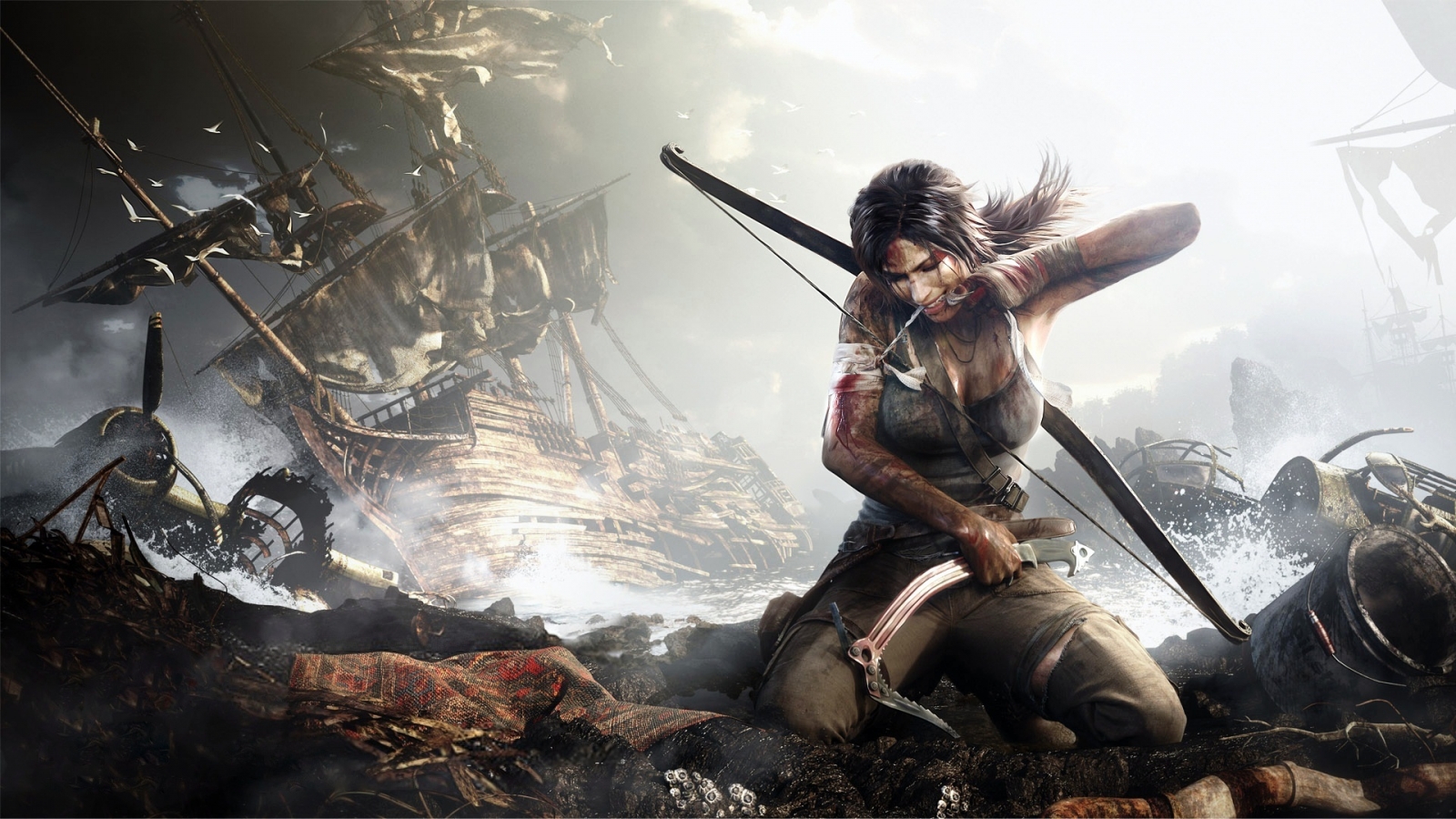
Done Right: Lara Croft from the "Tomb Raider" Series
A portrayal of a character should be something that explores and shines on what a character is. As previously stated with the past entries, they all failed on bringing out what made a character who they are. Lara Croft, however, is a rare exception. Bear in mind, video games are not old and don’t have a lot of reboots/reimaginings to have a strong list to work with. Here’s what the other character portrayals failed to do: expand on a character and keep what made a character beloved in the first place.
Now I know there will be some strong detractors that the original Lara Croft was the best one. She was extremely athletic, witty, and an overall badass character. The sex appeal probably also helped that factoid. Now, here’s the thing; that Lara Croft was also a very fragile human being. One does not go from a little chicken scared of its own shadow to Miss puts-your-gymnastic-team-to-shame Lara Croft like that. Having a young, inexperienced, and scared Lara Croft is something believable.
That’s where the second reboot for “Tomb Raider” comes in, “Tomb Raider (2013).” While toning down the obvious emphasis on Lara’s curves, Crystal Dynamics went with a starting point of where Lara Croft began treasure hunting. Lara is not a diehard ruins explorer, nor is she super acrobatic. She isn’t capable of scaling 90 degree walls until the end of her journey where she endured pain and suffering. Even then she has equipment that lets her figure out how to properly ascend tall features while stuck on a mountain.
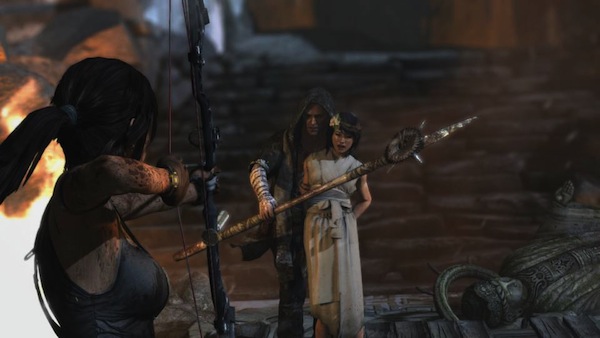
Dependent on which games you look at, Lara Croft has had some flavor text on her personality with herself and her friends. That also happens in the reboot. Lara, when finding treasure or writing in her log, would comment on here knowledge of the world. In fact, there’s a throwaway line where Lara says, “I hate tombs.” Imagine someone titled “Tomb Raider,” who started out as hating tombs. While the original Lara never flat out stated she hates tombs, it could very well imply a secret hatred that she just hates tombs because of the struggles she went through before. It’s an interesting thought as I’ve heard that writers have hated reading when they were kids. She also has a little friend, Sam Nishimura. Sam builds on a rather unique relationship between her and Lara, which while trying to survive and get off the island, is a motivating factor for Lara when Sam is kidnapped. Conrad Roth also fills in as a father figure for Lara, which allows Lara to grow and build strength for the extreme situations she has to face with the madmen on the island.
Of course the new Lara doesn’t come without faults. She is depicted killing an attacker as someone coming off of killing a person for the first time - shocked and traumatized. Lara is clearly shaken by the fact that she had to kill. Not too long after, however, Lara takes no time in slaughtering about 20 of the madmen on the island. At this point she shouts out to her enemies, “That’s right! Run, you bastards! I’m coming for you all!” One could argue that Lara has been so enraged she’s run out of fucks to give and just wants everyone who is not her friends dead. Another could also argue that these men have been on this island for longer than Lara has been alive, which makes Lara appear to be more blood thirsty than what is really called for. That’s just a small observance, however. “Rise of the Tomb Raider” is going to further explore Lara’s psyche where she deals with post-traumatic stress disorder, which isn’t really seen in games that often and that can be extremely interesting. Whether the whole Xbox exclusivity deal lets Crystal Dynamics explore that or dooms the game to be a future update to this article, however, is a different story for a later date.
With that, I may have missed another character that probably was mishandled or poorly portrayed. It isn’t the fact that these characters are the only ones, but they are the ones that I noticed that are striking obvious (save for Lara of course). Misrepresenting a character, unfortunately, will be a reoccurring thing in media whether we like it or not, but if we point out the failures of these portrayals, we can build even stronger and interesting characters. Don’t look at these failures as just failures alone. Sometimes failing to write a character as he or she should be helps strengthen the better qualities of the actual character by pointing out what didn’t work.
If you feel I missed a video game character that was poorly misrepresented, leave a comment on why someone was poorly handled! We might revisit misrepresented characters in the future if I find enough to work with to make another list.
